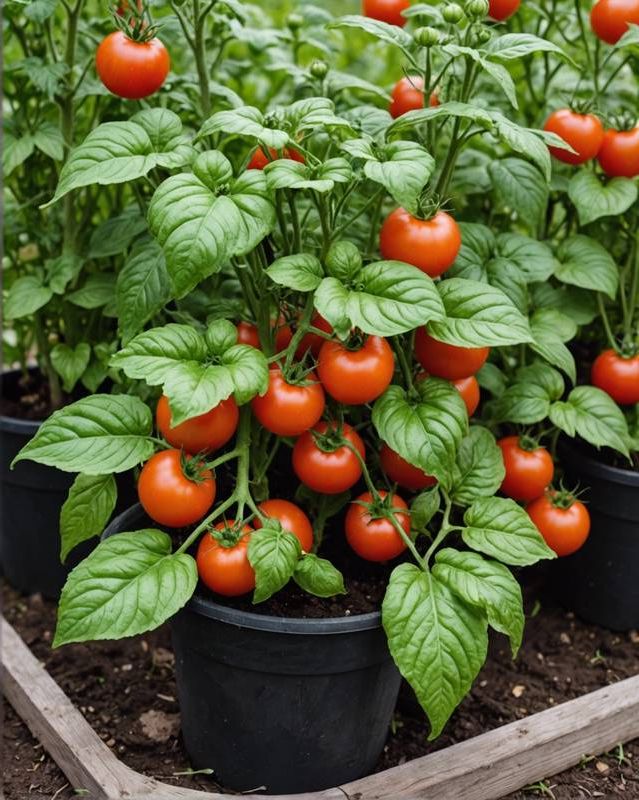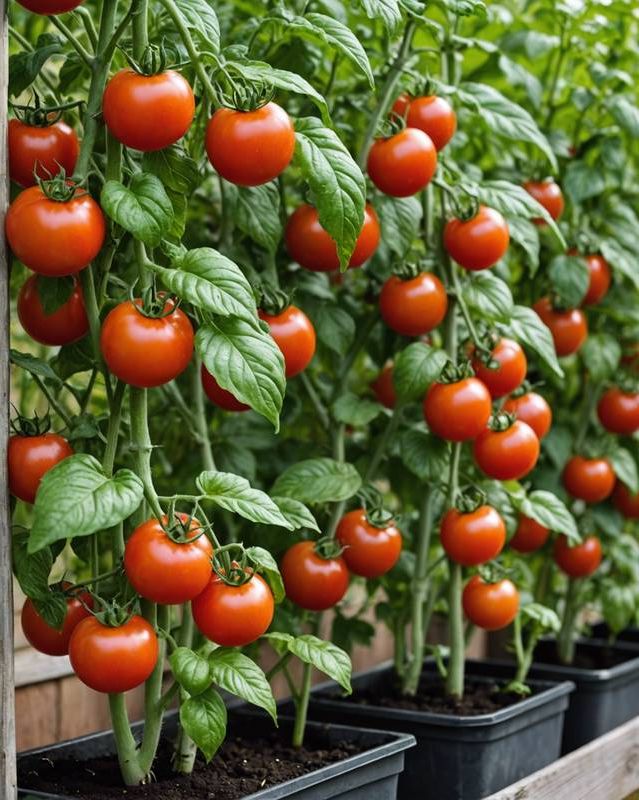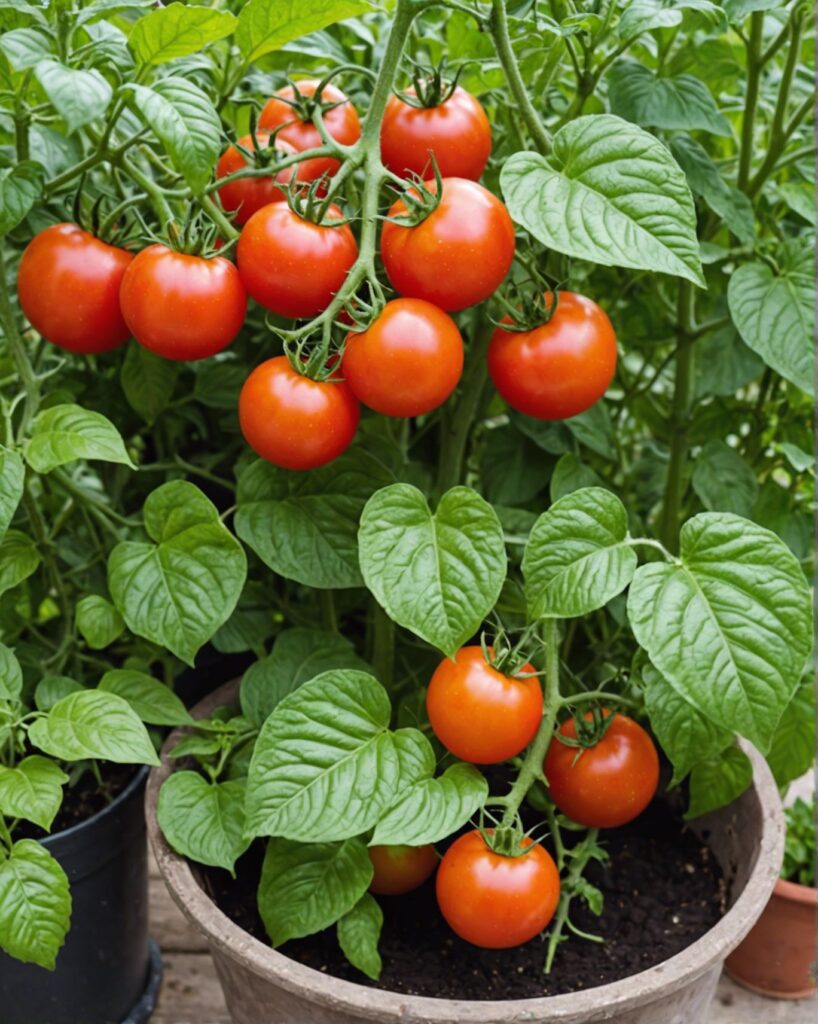Growing luscious tomatoes requires nurturing them with the right amount of water. Overwatering or underwatering can lead to stunted growth, disease, or even plant death.
In this guide, I’ll unveil the secrets to tomato watering, covering how much, how often, and when to quench their thirst.
Keep reading to make sure your tomato plants are happy and give you lots of tasty tomatoes!
Signs of Underwatered Tomato Plants

Wilting: Underwatered tomato plants will exhibit wilting leaves, particularly during the hottest part of the day.
Sometimes the leaves might start to turn a bit yellow or brown.
Hey there! Don’t forget to give the soil around your tomato plants a good check. Make sure it’s not too dry!
If it’s dry to the touch, even an inch or two below the surface, it’s a sign of underwatering.
Hey there! Just a heads up – if your tomato plants aren’t getting enough water, they might end up with stunted growth. Just make sure to give them a little extra love and hydration to help them thrive!
The leaves may be smaller than normal, and the overall size of the plant may be reduced.
Blossom Drop: Water stress can cause tomato plants to drop their blossoms before they develop into fruit.
This can lead to reduced yields.
Curling Leaves: In severe cases of underwatering, the leaves of tomato plants may start to curl inward.
This plant looks like it’s really struggling and could use some help right away.
Signs of Overwatered Tomato Plants

If you give your tomato plants too much water, they might start showing signs of being unhappy. Look out for things like…
Have you noticed some yellowing leaves on your plants? It might be because you’ve been watering them too much. When there’s too much water in the soil, it can actually reduce the oxygen levels and cause the leaves to turn yellow. Just something to keep in mind next time you’re taking care of your leafy friends!
Wilting: Overwatered tomato plants may also wilt, as the excess water can prevent the roots from absorbing nutrients.
Blossom-end rot: This is a condition that occurs when the bottom of the tomato fruit develops a dark, sunken spot. It is caused by a calcium deficiency, which can be brought on by overwatering.
Cracking: Overwatered tomato plants may also experience cracking, as the excess water can cause the fruit to swell and split.
Factors Affecting Tomato Watering Frequency

There are a few things to keep in mind when it comes to watering your tomato plants. One important factor is the type of soil you have.
Sandy soil tends to dry out faster, so you might need to water your plants more often compared to clay soil, which holds on to moisture. Just keep an eye on how dry the soil is and adjust your watering schedule accordingly!
The weather definitely comes into play when it comes to watering your plants. On scorching hot days, they’re going to need more water compared to when it’s cooler and cloudier outside.
Also, you’ll want to keep an eye on how old your plant is when deciding how often to water it. Young plants need a little extra TLC since their roots are still growing and can’t absorb water as efficiently.
As plants mature, they can tolerate longer intervals between watering.
Finally, monitor your plants for signs of wilting or drooping, which indicate a need for hydration. By considering these factors, you can adjust your watering schedule accordingly, ensuring optimal growth and productivity for your tomato plants.
How Much Water Do Tomato Plants Need?
You know, tomato plants are kinda like us – they need water to stay alive and grow big and strong. How much water they need can vary though, you know? It all depends on stuff like how big the plant is, what the weather’s like, and even the type of soil they’re in. Just gotta keep an eye on ’em and give ’em what they need to keep on thriving.
Generally, tomato plants need about 1-2 inches of water per week.
In warm, sunny weather, your plants might get thirsty more often. So, remember to give them a good drink to keep the soil nice and damp. Just be careful not to overdo it, as too much water can make their roots rot.
To check if your tomato plants need water, stick your finger in the soil up to the first knuckle.
If you touch the soil and it feels dry to the touch, then it’s probably a good idea to give your plants some water. Just be careful not to overdo it because if you water too much, it can cause the soil to get waterlogged and that can make it hard for the roots to breathe.
How Often Should You Water Tomato Plants?

Figuring out how often to water your tomato plants really comes down to a few things like the type of soil you’ve got, the weather where you live, and how your plants are growing.
Generally, established tomato plants need about 1-2 inches of water per week, but adjust based on these factors:
- Soil Type: Sandy soil drains quickly, so water more frequently. Clay soil retains moisture, so water less often.
- Climate: Hot, dry climates require more frequent watering. Cooler, rainy climates may need less.
- Plant Stage: Seedlings require more frequent watering, while mature plants can tolerate longer periods between watering.
When is the Best Time to Water Tomato Plants?

When is the best time to water tomato plants? The ideal time to water tomato plants is in the morning.
This setup helps the leaves dry out during the day, which is important because it helps prevent diseases from forming.
Avoid watering at night, as this can lead to waterlogged soil and increased susceptibility to fungal issues.
Watering Tomato Plants by Hand vs. Automated Systems
Manual watering allows for tailored attention to individual plants, considering their size, sunlight exposure, and soil conditions. This flexibility enables adjustments for specific needs and ensures optimal moisture levels.
On the flip side, automated systems take care of watering regularly so you don’t have to constantly keep an eye on it.
They can be programmed to consider factors like weather conditions and plant growth stages. Both methods have advantages, depending on the scale and preferences of the gardener.
Tips for Efficient Tomato Watering

If you want your tomatoes to thrive, it’s important to know how much water they need. To make sure they’re getting just the right amount and avoid any water problems, here are some tips: Start by checking the soil moisture – stick your finger about 2-3 inches into the dirt before watering.
Water only if the soil feels dry to the touch.
Water deeply: When you do water, thoroughly soak the soil to a depth of 6-8 inches, so the roots can absorb sufficient moisture. Frequency: In warm, dry weather, water every 3-4 days.
Reduce frequency in cooler, wetter periods.
Time of day: Water in the morning or evening when evaporation is lower. Avoid overhead watering: Wet foliage can invite disease.
Water directly at the base of the plant, using a soaker hose or drip irrigation.
Mulch around plants: A layer of mulch helps retain soil moisture and reduce evaporation.







